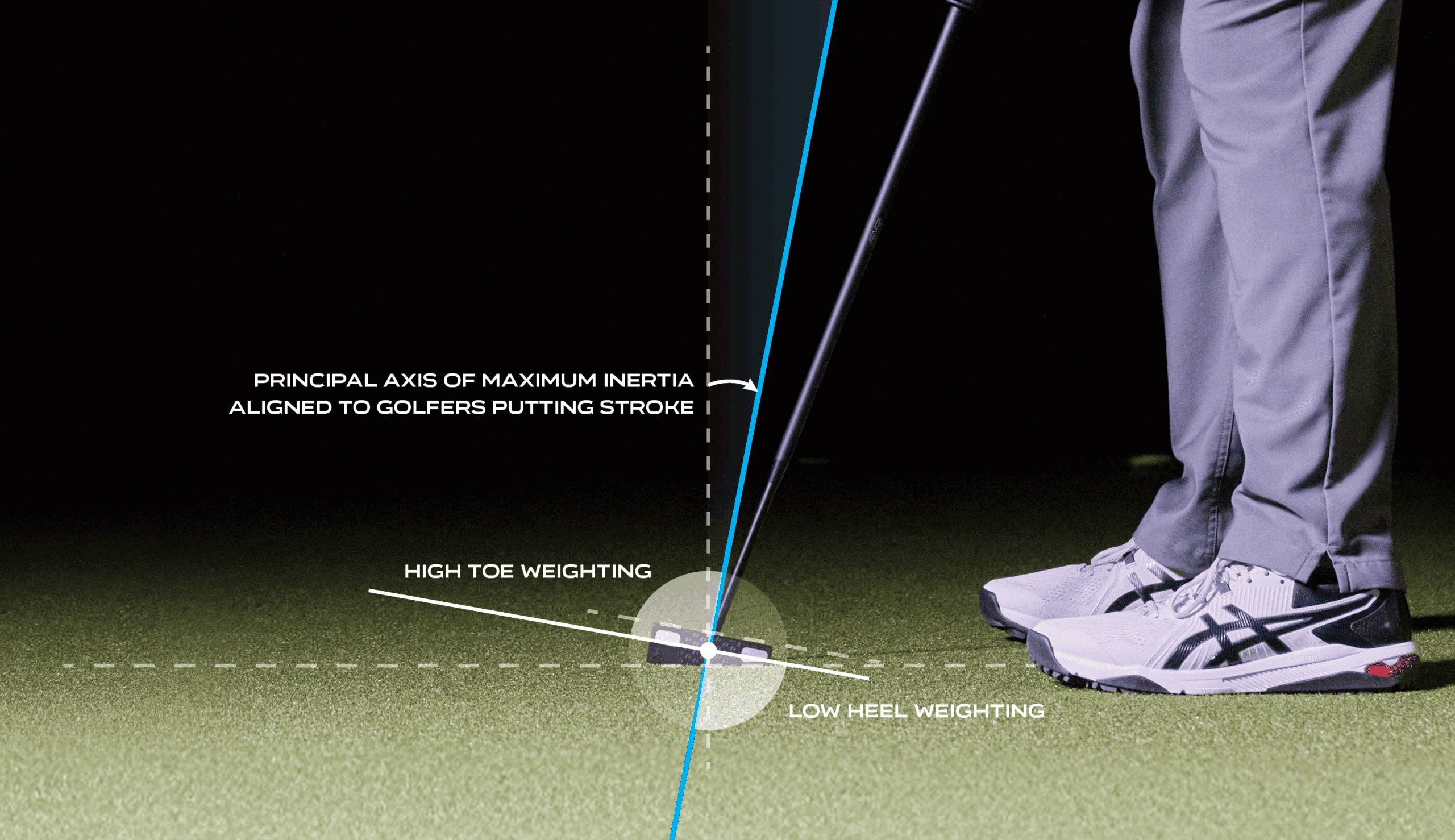
When it comes to golf equipment, especially in the competitive realm of putting, a few buzzwords have become almost religious mantras over the past few years: zero-torque, face-balanced, and center of gravity alignment. These terms are plastered across product pages, whispered on putting greens, and endlessly repeated in marketing campaigns.
But it’s 2025, and many golfers are beginning to question whether these once-revolutionary concepts have become little more than overused clichés. And leading that shift in mindset is one bold new entry: the Paradox Putter.
Let’s take a deep dive into how putting has grown stagnant, and how the Paradox Putter is breathing motion and meaning back into a category long overdue for disruption.
Golfers are constantly searching for the perfect roll. To meet that need, putter manufacturers have historically leaned on a few proven claims to help distinguish their products. But over time, many of these features have become so commonplace that they’ve lost real meaning.
Zero-torque sounds powerful, and to the untrained ear, it promises a putter that resists any twisting during the stroke. The implication is that a zero-torque putter will stay perfectly square at impact, no matter how imperfect your swing might be. But in reality, no putter can eliminate torque entirely.
The shaft and head still interact with rotational forces throughout the stroke. In most cases, “zero-torque” really just means the putter looks and feels stable at address—not necessarily during motion.
Another classic is the term “face-balanced.” This refers to a putter that points straight up when rested flat on a finger or a balancing point. It implies stability and a resistance to face rotation during the stroke. But the problem is simple: your stroke is not static. Golfers don’t hold their putters still. They swing them. So a putter balanced to sit flat while idle may not actually perform better during a live putt, especially for players with natural arc in their stroke.
The same goes for “center of gravity alignment.” Manufacturers often tout their CG placement as a path to greater forgiveness and consistency. But once again, this is a static measurement. What matters more is how that center of gravity behaves through motion, especially during acceleration and follow-through. The golf stroke is dynamic—and any true innovation must address the physics of that dynamic movement.
Enter the Paradox Putter, our breakthrough design that throws out the clichés and introduces a radically new way of thinking. Instead of focusing on how a putter balances while still, it’s engineered to stay stable while in motion. The key innovation? Something we call Principal Axis Technology, or “Swing Balance.”
It’s an entirely new way of approaching the weight distribution, geometry, and dynamic movement of the putter. Here’s how it works.
The Paradox Putter is constructed to align its principal axis of inertia with the path of a typical putting stroke. In simple terms, this means it is designed to naturally resist twisting while it is moving, not just sitting on the green. The weighting is asymmetrical and intentionally placed: more weight is added high on the toe and low on the heel, which changes how the club reacts during the stroke itself.
Rather than fighting against your swing, the Paradox Putter complements it. The head stays more stable on mishits, the roll starts faster, and face deflection is reduced dramatically. This approach doesn’t just sound good in theory—it creates noticeable results in performance, particularly in the hands of golfers who struggle with consistency on the green.
Where most putters focus on how they look at address, the Paradox Putter focuses on how they behave during the swing. This is a philosophical shift in the way golf equipment is designed.
While traditional face-balanced putters might look impressive when you line them up, the Paradox is built to keep you square through the entirety of your motion. And that’s where putts are won or lost: not in how you start, but in how the putter reacts through impact.
This is where Principal Axis Technology sets itself apart. It acknowledges the dynamic reality of putting, accounting for off-center strikes, acceleration variance, and natural wrist movement. By aligning with the actual physics of a golfer’s stroke, the Paradox helps the face stay on line longer and improves distance control—even when the swing isn’t perfect.
Golfers can choose between two refined models:
Both models share several key features that elevate performance:
No matter which you choose, you get a putter designed not to simply look balanced, but to stay balanced—through every part of your swing.
What makes the Paradox Putter especially compelling is that it’s not just built for tour pros. Mid-handicap and casual golfers have reported significant improvements after switching:
Instead of relying on the illusion of perfect form, the Paradox allows for a level of forgiveness and performance enhancement that adapts to the way real golfers actually swing.
Zero-torque, face-balanced, and CG optimization once meant something. But they’ve now become empty phrases, repeated endlessly, but rarely challenged or improved upon. The Paradox Putter is different because it doesn’t play the same marketing game. It’s not just about setup, alignment, or balance points. It’s about how a putter behaves during the only thing that matters: the stroke.
For players who are ready to move beyond cosmetic balance and into the realm of true dynamic performance, the Paradox Putter represents a seismic shift in golf club design.
In a market saturated with copycat designs and recycled tech terms, the Paradox Putter stands alone. It challenges the old rules. It respects the complexity of the golf stroke. And most importantly, it delivers results where it counts: on the green.
If you’ve been chasing consistency and control, and if you’re tired of empty buzzwords that don't translate into better performance, it might be time to rethink your putter entirely.